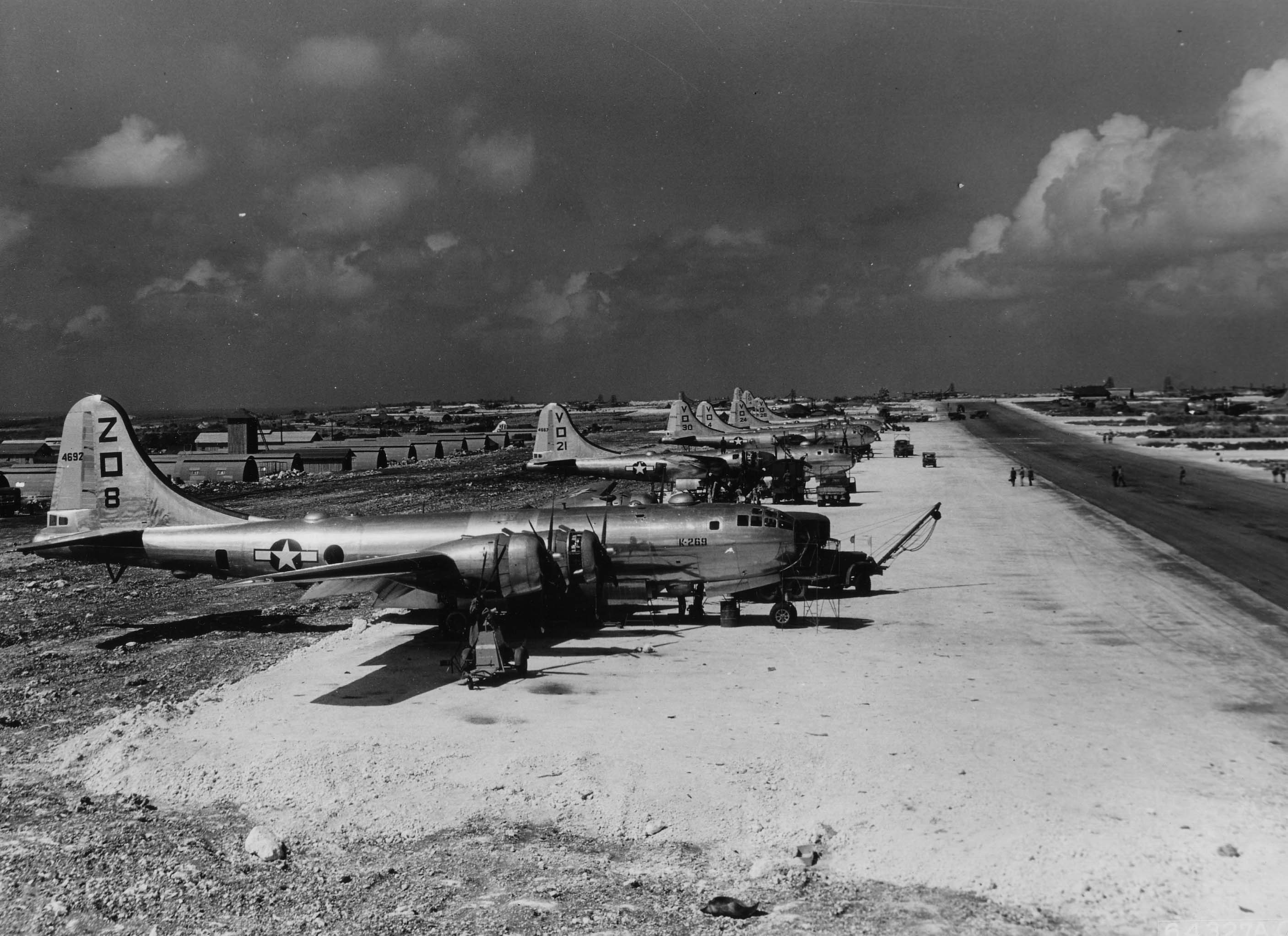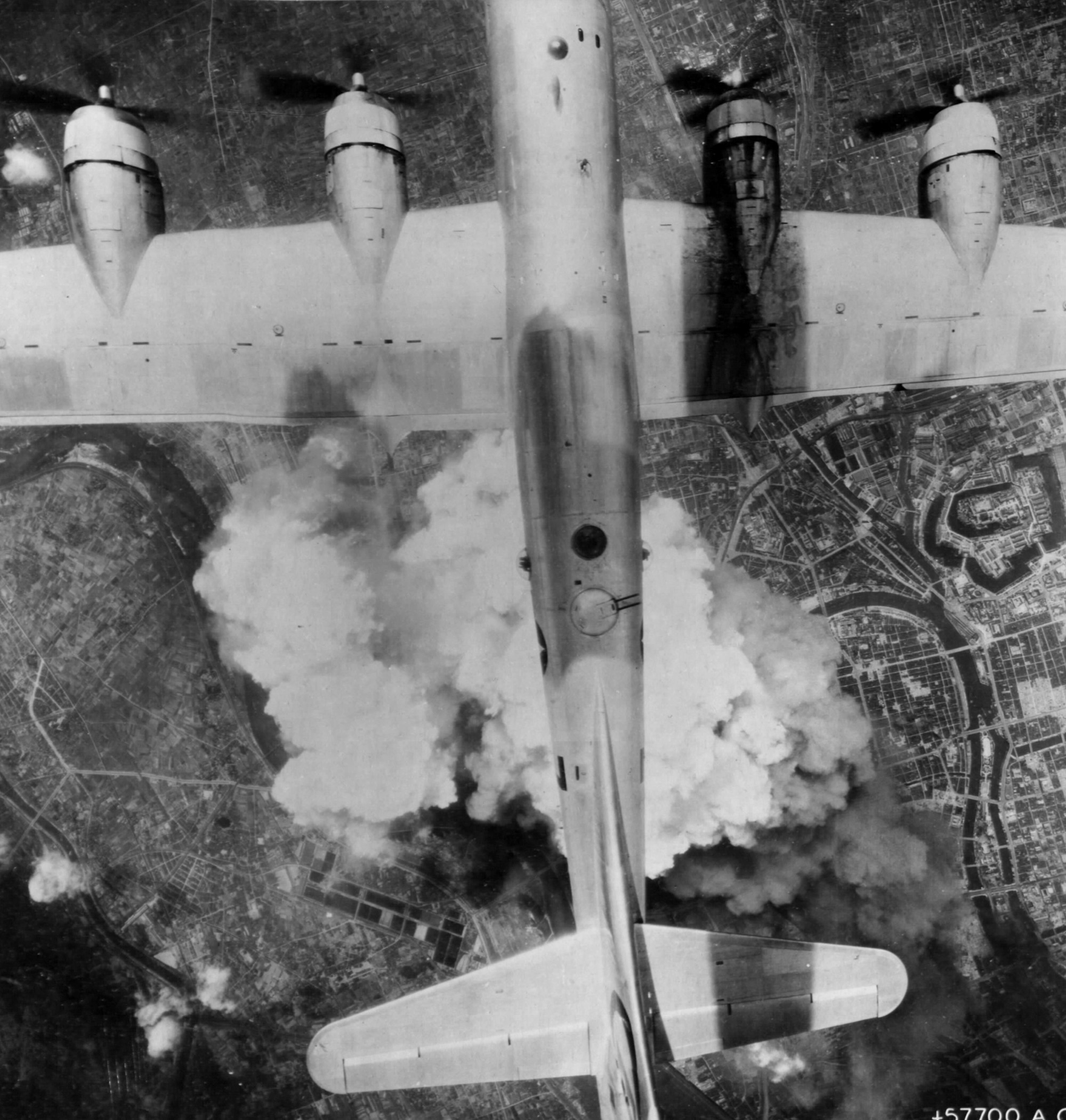You are using an out of date browser. It may not display this or other websites correctly.
You should upgrade or use an alternative browser.
You should upgrade or use an alternative browser.
How to piss off the CAF
- Thread starter fholbert
- Start date
JeppUpdater
Well-Known Member
I know the CAF had some issues with the original engines and ended up building this hodgepodge engine up mostly based around the version of the 3350 from the A-1 Skyraider.
Anyone know if this one is running the same?
I miss being able to see Fifi in ADS when it was kept at Cavanaugh. Such an awesome airplane.
Anyone know if this one is running the same?
I miss being able to see Fifi in ADS when it was kept at Cavanaugh. Such an awesome airplane.
Hacker15e
Who am I? Where are my pants?
How will that piss off the CAF?
The CAF has certainly had its share of issues over the years, but I don't see how any of that is related to how many B-29s are airworthy and flying.
The current General Manager of the CAF B-29/B-24 Squadron, Brad Pilgrim, is a close friend of mine and a no-nonsense genuine warbird enthusiast. He'd be the first to tell you he's tickled pink to see another B-29 take flight.
The CAF has certainly had its share of issues over the years, but I don't see how any of that is related to how many B-29s are airworthy and flying.
The current General Manager of the CAF B-29/B-24 Squadron, Brad Pilgrim, is a close friend of mine and a no-nonsense genuine warbird enthusiast. He'd be the first to tell you he's tickled pink to see another B-29 take flight.
killbilly
Vocals, Lyrics, Triangle, Washboard, Kittens
I know the CAF had some issues with the original engines and ended up building this hodgepodge engine up mostly based around the version of the 3350 from the A-1 Skyraider.
Anyone know if this one is running the same?
I miss being able to see Fifi in ADS when it was kept at Cavanaugh. Such an awesome airplane.
Mrs. Killbilly got to ride in FiFi for the rehearsal flyover they did in DC. She said it was pretty awesome.
When Doc was in Wichita I was working Italy 767 Tanker out of there. Our PR guy was taking the Italy AF detachment on a tour of the hangar and plane, and while talking with him in the Italy office he suggested maybe he should get the Japanese AF delegation to go along as well.........
We told him that might not be the best of ideas.........
We told him that might not be the best of ideas.........
CFI A&P
Exploring the world one toilet at a time.
He must be implying that there will be jealousy from the CAF since they won't have the only airworthy B-29 anymore. Sure, that will change to the first airworthy or something.
In the end, it is still very cool to see them being restored and returned to flying status.
You know what sounds better than a B-29?
Two B-29s.
Sent from my iPhone using Tapatalk
In the end, it is still very cool to see them being restored and returned to flying status.
You know what sounds better than a B-29?
Two B-29s.
Sent from my iPhone using Tapatalk
USMCmech
Well-Known Member
He must be implying that there will be jealousy from the CAF since they won't have the only airworthy B-29 anymore. Sure, that will change to the first airworthy or something.
In the end, it is still very cool to see them being restored and returned to flying status.
The CAF has given Doc's crew a LOT of support over the past decade. From staff support, procedures, flight time, and spare parts, Doc would not be this close to flying without FiFi.
Once Doc flies, they will be the only two ever again. There are no restorable B-29 airframes left anywhere.
Hacker15e
Who am I? Where are my pants?
Once Doc flies, they will be the only two ever again. There are no restorable B-29 airframes left anywhere.
Kermit Weeks still has Fertile Myrtle, which was an airworthy airplane up into the 1980s. It is all still complete and undamaged, although it has some of the same wing-box corrosion that FiFi had; it is just disassembled and obviously hasn't flown in 30 years.
If anyone with big $$ comes along in the future and wants a flyable B-29, and Kermit will part with it, that's a definite candidate to take to the air again.


Kermit Weeks still has Fertile Myrtle, which was an airworthy airplane up into the 1980s. It is all still complete and undamaged, although it has some of the same wing-box corrosion that FiFi had; it is just disassembled and obviously hasn't flown in 30 years.
If anyone with big $$ comes along in the future and wants a flyable B-29, and Kermit will part with it, that's a definite candidate to take to the air again.


@Derg has big bucks!
tlewis95
I drive planes
Certainly not true. The CAF B29/B24 Squadron has been helping the Doc guys out for years to get theirs flying. We have had some of their people out on tour with Fifi to give them an idea of how we operate. Fifi's Crew Chief did the first engine runs on Doc, and it will be a CAF flight crew doing the first few flights and eventually doing their training.
The only real way to piss off the CAF is to say that you have the last flying B24, when you really don't.
The only real way to piss off the CAF is to say that you have the last flying B24, when you really don't.
tlewis95
I drive planes
I know the CAF had some issues with the original engines and ended up building this hodgepodge engine up mostly based around the version of the 3350 from the A-1 Skyraider.
Anyone know if this one is running the same?
I miss being able to see Fifi in ADS when it was kept at Cavanaugh. Such an awesome airplane.
Yes, Doc has the hybrid 3350-29s that the CAF crew came up with for Fifi. Fifi is still just across town at the Vintage Flying Museum at Meachem and Diamond Lil is just about done with a restoration period at CAF HQ on the south end of RBD.
tlewis95
I drive planes
How will that piss off the CAF?
The CAF has certainly had its share of issues over the years, but I don't see how any of that is related to how many B-29s are airworthy and flying.
The current General Manager of the CAF B-29/B-24 Squadron, Brad Pilgrim, is a close friend of mine and a no-nonsense genuine warbird enthusiast. He'd be the first to tell you he's tickled pink to see another B-29 take flight.
Brad is the man!
Champcar
Well-Known Member
Here is a good rundown of the hybrid engine, pretty interesting stuff. http://www.warbirdinformationexchange.org/phpBB3/viewtopic.php?f=3&t=50246&start=240#p524897Yes, Doc has the hybrid 3350-29s that the CAF crew came up with for Fifi. Fifi is still just across town at the Vintage Flying Museum at Meachem and Diamond Lil is just about done with a restoration period at CAF HQ on the south end of RBD.
A Life Aloft
Well-Known Member
Such a mighty and beautiful plane. To think there were almost 4,000 of them built and now only a handful left, is sad. She was such an incredible force in the Pacific theater during WWII as well as in the Korean war.
The skies were once the home for these marvelous airplanes, not a museum and not a hangar. She had a range of some 3,200 miles. She had the speed of a fighter and could carry could carry 20,000 pounds of explosives at 30,000 and 40,000 feet. The Superfortress employed the very first radar bombing system of any US bomber.
She had a pressurized cabin (front and back compartments only), tricycle dual-wheeled landing gear, and remote controlled gun turrets. She sported 12 remotely controlled .50 caliber Browning machine guns and a 20 millimeter cannon at the tail gun.


By the time B-29s entered the war, in May 1944, an earlier generation of heavy bombers had leveled much of Germany. The Superforts deployed to Tinian, in the Marianas Islands, where legions of Seabees had built the war’s largest and busiest airfield. Tokyo was about 1,500 miles north, well within the bomber’s radius.


General LeMay soon changed their missions. Daylight missions gave way to intensive, nighttime firebombing over Tokyo and other cities. He sent them in at only 10,000 feet and they would approach at night, low, not in formation but singly, each plane now carrying twice their previous bomb load. Years later, B-29 tail gunners would remember seeing, as they turned for home, Japanese cities reduced to beds of glowing embers.

The crew of the B-29 was typically eleven, comprising of pilot, copilot, bombardier, navigator, flight engineer, radio operator, radar operator, central fire control gunner, left side gunner, right side gunner and tail gunner. The first six crewmen were housed in the forward pressurized cabin. The next four were housed in the rear pressurized cabin. The tail gunner was in a separate pressurized compartment in the tail.

The skies were once the home for these marvelous airplanes, not a museum and not a hangar. She had a range of some 3,200 miles. She had the speed of a fighter and could carry could carry 20,000 pounds of explosives at 30,000 and 40,000 feet. The Superfortress employed the very first radar bombing system of any US bomber.
She had a pressurized cabin (front and back compartments only), tricycle dual-wheeled landing gear, and remote controlled gun turrets. She sported 12 remotely controlled .50 caliber Browning machine guns and a 20 millimeter cannon at the tail gun.


By the time B-29s entered the war, in May 1944, an earlier generation of heavy bombers had leveled much of Germany. The Superforts deployed to Tinian, in the Marianas Islands, where legions of Seabees had built the war’s largest and busiest airfield. Tokyo was about 1,500 miles north, well within the bomber’s radius.


General LeMay soon changed their missions. Daylight missions gave way to intensive, nighttime firebombing over Tokyo and other cities. He sent them in at only 10,000 feet and they would approach at night, low, not in formation but singly, each plane now carrying twice their previous bomb load. Years later, B-29 tail gunners would remember seeing, as they turned for home, Japanese cities reduced to beds of glowing embers.

The crew of the B-29 was typically eleven, comprising of pilot, copilot, bombardier, navigator, flight engineer, radio operator, radar operator, central fire control gunner, left side gunner, right side gunner and tail gunner. The first six crewmen were housed in the forward pressurized cabin. The next four were housed in the rear pressurized cabin. The tail gunner was in a separate pressurized compartment in the tail.

Last edited:
A Life Aloft
Well-Known Member
Just for fun...........
You never start a radial, you just wake it up.
You never start a radial, you just wake it up.
Area 5150
Model citizen, Zero discipline
The CAF has given Doc's crew a LOT of support over the past decade. From staff support, procedures, flight time, and spare parts, Doc would not be this close to flying without FiFi.
Once Doc flies, they will be the only two ever again. There are no restorable B-29 airframes left anywhere.
Agreed. It makes me sad that there is a B-29 rotting it's ass off in Louisiana weather and pigeon poop at Barksdale Air Force Base museum.
Oh, let's thrown in a Vulcan for good measure too. It's criminal they won't build a indoor facility for these planes at KBAD.
